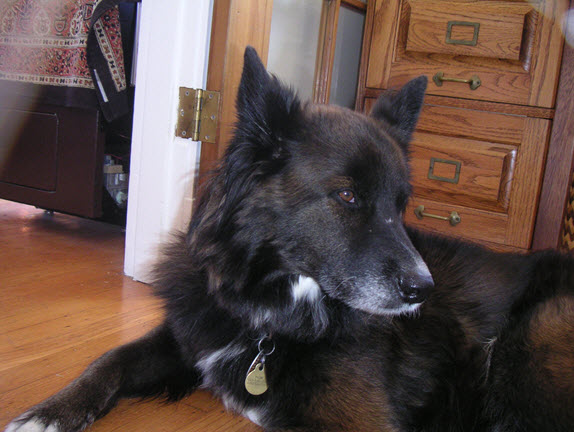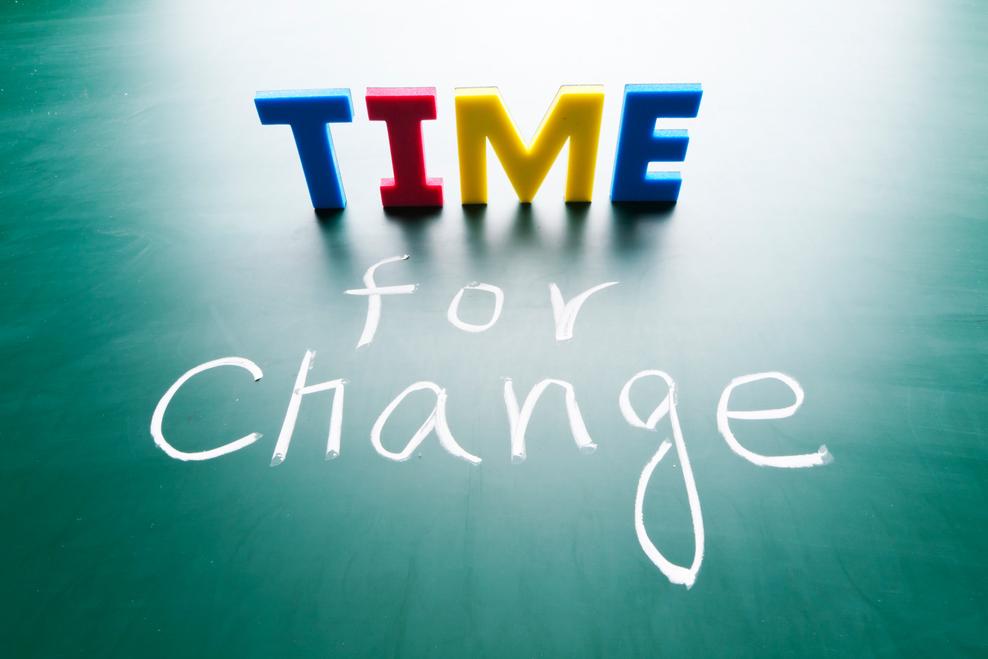Tension in the conference room hit the red zone. One VP animatedly described his current project as “a battle”. He was angry with several people who report to him for “lagging” and one for “abrogation of duty”. Others were “incompetent” as their inability “to take orders” demonstrated I was struck by his language. Did it describe his reality or help construct it? What did it mean for the executive team’s future?
I am a coach and my work in that conference room demanded an understanding of where the executive team broke down, how specifically the issues affected the culture and what steps were required to bring these decision makers into enough alignment so the corporation’s mission could move forward.
“Listen deeply,” we are often told by communication experts. As coaches, though we nod sagely in response, what exactly are we agreeing to do? I suggest a critical first step is to attend to the metaphors our clients utilize which frame their unique perspective on reality.
We learned in literature class that metaphors and similes add interest to our writing and speech. And while that is true let’s concentrate on metaphors as more than a linguistic device. Let’s look instead at metaphor as a means to interpret the client’s world.
Metaphor is used here as any circumstance in which a person uses one conceptual category, circumstance or thing to define or describe another; essentially to understand and experience one thing in terms of something else.
Linguist George Lakoff and philosopher Mark Johnson provide convincing evidence that metaphors may actually be people’s primary mode of mental operation. They argue that because the mind is “embodied” – that is, it experiences the world through the body in which it resides – people cannot help but conceptualize the world in terms of bodily perceptions. Our concepts of up-down, in-out, front-back, light-dark, warm-cold are all related to orientations and perceptions acquired through bodily senses.
“She is a top performer” indicates a vertical orientation while “ he is falling behind” indicates a horizontal one. In the book, Metaphors We Live By, Lakoff and Johnson suggest that the metaphors through which people conceptualize abstract concepts influence the way in which they understand them. Furthermore, this understanding frames their actions which reinforces the metaphors, creating a self-fulfilling prophecy.
Consider some familiar expressions people use when describing ideas as food, plants, and commodities.
Ideas Are Food
What he said left a bad taste in my mouth. These are nothing but half-baked ideas, and warmed over theories. I can’t digest all these new ideas. Can you swallow that claim Doesn’t that argument smell fishy? Now here’s an idea you can really sink your teeth into. She devours information. This is the meaty part of the paper.
Ideas Are Plants
She has a fertile imagination. Her ideas have come to fruition. That idea died on the vine. That’s a budding theory. The seeds of his great ideas were planted in his youth. He has a barren mind.
Ideas Are Commodities
There is always a market for good ideas. Great ideas are currency in the intellectual marketplace. It is important how you package your ideas. She has been a source of valuable ideas.
What can we discern about the speakers of these sentences? It is no surprise that humans attempt to understand vague, abstract or complex concepts in terms of more familiar experiences. The point is that the metaphor a person selects to frame a concept/experience necessarily focuses attention on some aspects while ignoring others.
If ideas are commodities, then they must be marketable. Focusing attention onthis metaphor emphasizes how these ideas will be received (bought) by other people and whether they are saleable. This is very different from an orientation that holds ideas are plants. If ideas are plants, instead of rushing to get them out the door and to crank out as many as possible, ideas can be allowed to ripen and mature, to come to fruition. For the speaker who holds ideas are food, they are to be digested. Many ideas can then be tasted and tried. Ideas are to be consumed by that speaker.
In listening deeply we are able to note how the speaker who orients to holding ideas as commodities places value externally. A belief is expressed that value is in the eyes of the beholder (or buyer). Once we recognize this belief, we can check out whether this is true in other parts of life for this person. If his orientation is external, he places importance on how he is perceived. What behaviors would follow from this orientation? How would he assess others? Where would he find meaning? What role would self-image play in his life?
Returning to the conference room, I note that VP, who holds his experience as a battle, may see his role as a general and his direct reports as his battalion. He is more likely to see his organization as a hierarchy than an opportunity for collaboration and to interpret requests of him as orders and to issue commands that are non-negotiable. What becomes important when listening deeply to him is checking whether this orientation holds for the rest of his life. If so, what is the cost to him to hold life this way? What is missing for him?
Since metaphors are particularly useful, as they define roles, how a person sees himself and others, quickly becomes clear to the coach. From here, an understanding of the speaker’s experience of the world emerges. Often, metaphors become an excellent predictor of the behavior the speaker will naturally assume. Knowing this, a coach can anticipate breakdowns.
When I worked with teachers, I heard many metaphors that disclosed the teacher’s orientation to his students. My classroom is a zoo, or my kids are really blossoming told me a great deal about how that teacher perceived of herself, her role, her students and education.
If a speaker sees himself as a gardener, his direct reports are plants to be cultivated. If he is a shepherd, they are sheep, unable to think for themselves. Furthermore, do these speakers think of their family members, friends and associates this way? What behavior would be predicated by these ways of orienting to others? To themselves? To the world?
As coaches we can begin to develop the competence of listening deeply by taking note of the metaphors we hear. We start with ourselves. Becoming aware of the metaphors we use, holding questions about the natural behavior that follows from this perspective – our orientation to others, checking these out are important first steps. Anticipating breakdowns follows from there. Working this way, first with ourselves then with clients makes the command, “listen deeply” a practical tool. Metaphors are powerful. Pay attention to them and your coaching will deepen.
How Language Reveals Our Reality: Food for Thought
Tension in the conference room hit the red zone. One VP animatedly described his current project as “a battle”. He was angry with several people who report to him for “lagging” and one for “abrogation of duty”. Others were “incompetent” as their inability “to take orders” demonstrated I was struck by his language. Did it describe his reality or help construct it? What did it mean for the executive team’s future?
I am a coach and my work in that conference room demanded an understanding of where the executive team broke down, how specifically the issues affected the culture and what steps were required to bring these decision makers into enough alignment so the corporation’s mission could move forward.
“Listen deeply,” we are often told by communication experts. As coaches, though we nod sagely in response, what exactly are we agreeing to do? I suggest a critical first step is to attend to the metaphors our clients utilize which frame their unique perspective on reality.
We learned in literature class that metaphors and similes add interest to our writing and speech. And while that is true let’s concentrate on metaphors as more than a linguistic device. Let’s look instead at metaphor as a means to interpret the client’s world.
Metaphor is used here as any circumstance in which a person uses one conceptual category, circumstance or thing to define or describe another; essentially to understand and experience one thing in terms of something else.
Linguist George Lakoff and philosopher Mark Johnson provide convincing evidence that metaphors may actually be people’s primary mode of mental operation. They argue that because the mind is “embodied” – that is, it experiences the world through the body in which it resides – people cannot help but conceptualize the world in terms of bodily perceptions. Our concepts of up-down, in-out, front-back, light-dark, warm-cold are all related to orientations and perceptions acquired through bodily senses.
“She is a top performer” indicates a vertical orientation while “ he is falling behind” indicates a horizontal one. In the book, Metaphors We Live By, Lakoff and Johnson suggest that the metaphors through which people conceptualize abstract concepts influence the way in which they understand them. Furthermore, this understanding frames their actions which reinforces the metaphors, creating a self-fulfilling prophecy.
Consider some familiar expressions people use when describing ideas as food, plants, and commodities.
Ideas Are Food
What he said left a bad taste in my mouth. These are nothing but half-baked ideas, and warmed over theories. I can’t digest all these new ideas. Can you swallow that claim Doesn’t that argument smell fishy? Now here’s an idea you can really sink your teeth into. She devours information. This is the meaty part of the paper.
Ideas Are Plants
She has a fertile imagination. Her ideas have come to fruition. That idea died on the vine. That’s a budding theory. The seeds of his great ideas were planted in his youth. He has a barren mind.
Ideas Are Commodities
There is always a market for good ideas. Great ideas are currency in the intellectual marketplace. It is important how you package your ideas. She has been a source of valuable ideas.
What can we discern about the speakers of these sentences? It is no surprise that humans attempt to understand vague, abstract or complex concepts in terms of more familiar experiences. The point is that the metaphor a person selects to frame a concept/experience necessarily focuses attention on some aspects while ignoring others.
If ideas are commodities, then they must be marketable. Focusing attention onthis metaphor emphasizes how these ideas will be received (bought) by other people and whether they are saleable. This is very different from an orientation that holds ideas are plants. If ideas are plants, instead of rushing to get them out the door and to crank out as many as possible, ideas can be allowed to ripen and mature, to come to fruition. For the speaker who holds ideas are food, they are to be digested. Many ideas can then be tasted and tried. Ideas are to be consumed by that speaker.
In listening deeply we are able to note how the speaker who orients to holding ideas as commodities places value externally. A belief is expressed that value is in the eyes of the beholder (or buyer). Once we recognize this belief, we can check out whether this is true in other parts of life for this person. If his orientation is external, he places importance on how he is perceived. What behaviors would follow from this orientation? How would he assess others? Where would he find meaning? What role would self-image play in his life?
Returning to the conference room, I note that VP, who holds his experience as a battle, may see his role as a general and his direct reports as his battalion. He is more likely to see his organization as a hierarchy than an opportunity for collaboration and to interpret requests of him as orders and to issue commands that are non-negotiable. What becomes important when listening deeply to him is checking whether this orientation holds for the rest of his life. If so, what is the cost to him to hold life this way? What is missing for him?
Since metaphors are particularly useful, as they define roles, how a person sees himself and others, quickly becomes clear to the coach. From here, an understanding of the speaker’s experience of the world emerges. Often, metaphors become an excellent predictor of the behavior the speaker will naturally assume. Knowing this, a coach can anticipate breakdowns.
When I worked with teachers, I heard many metaphors that disclosed the teacher’s orientation to his students. My classroom is a zoo, or my kids are really blossoming told me a great deal about how that teacher perceived of herself, her role, her students and education.
If a speaker sees himself as a gardener, his direct reports are plants to be cultivated. If he is a shepherd, they are sheep, unable to think for themselves. Furthermore, do these speakers think of their family members, friends and associates this way? What behavior would be predicated by these ways of orienting to others? To themselves? To the world?
As coaches we can begin to develop the competence of listening deeply by taking note of the metaphors we hear. We start with ourselves. Becoming aware of the metaphors we use, holding questions about the natural behavior that follows from this perspective – our orientation to others, checking these out are important first steps. Anticipating breakdowns follows from there. Working this way, first with ourselves then with clients makes the command, “listen deeply” a practical tool. Metaphors are powerful. Pay attention to them and your coaching will deepen.
Tension in the conference room hit the red zone. One VP animatedly described his current project as “a battle”. He was angry with several people who report to him for “lagging” and one for “abrogation of duty”. Others were “incompetent” as their inability “to take orders” demonstrated I was struck by his language. Did it describe his reality or help construct it? What did it mean for the executive team’s future?
I am a coach and my work in that conference room demanded an understanding of where the executive team broke down, how specifically the issues affected the culture and what steps were required to bring these decision makers into enough alignment so the corporation’s mission could move forward.
“Listen deeply,” we are often told by communication experts. As coaches, though we nod sagely in response, what exactly are we agreeing to do? I suggest a critical first step is to attend to the metaphors our clients utilize which frame their unique perspective on reality.
We learned in literature class that metaphors and similes add interest to our writing and speech. And while that is true let’s concentrate on metaphors as more than a linguistic device. Let’s look instead at metaphor as a means to interpret the client’s world.
Metaphor is used here as any circumstance in which a person uses one conceptual category, circumstance or thing to define or describe another; essentially to understand and experience one thing in terms of something else.
Linguist George Lakoff and philosopher Mark Johnson provide convincing evidence that metaphors may actually be people’s primary mode of mental operation. They argue that because the mind is “embodied” – that is, it experiences the world through the body in which it resides – people cannot help but conceptualize the world in terms of bodily perceptions. Our concepts of up-down, in-out, front-back, light-dark, warm-cold are all related to orientations and perceptions acquired through bodily senses.

 So what kind of questions am I talking about?
So what kind of questions am I talking about?
 My lovely dog, Beezley, gave up some long hikes for shorter trots in the neighborhood. He hung out near my feet as I packed in whole days on the computer and phone. He even took his vitamins with less fuss. After 11 hour days on the computer, he hopped enthusiastically up on the bed to keep me company, when I collapsed at night.
My lovely dog, Beezley, gave up some long hikes for shorter trots in the neighborhood. He hung out near my feet as I packed in whole days on the computer and phone. He even took his vitamins with less fuss. After 11 hour days on the computer, he hopped enthusiastically up on the bed to keep me company, when I collapsed at night. So here are the 3 steps to living a happier life:
So here are the 3 steps to living a happier life: You want to change. It’s not easy. You’ve probably noticed that.
You want to change. It’s not easy. You’ve probably noticed that.